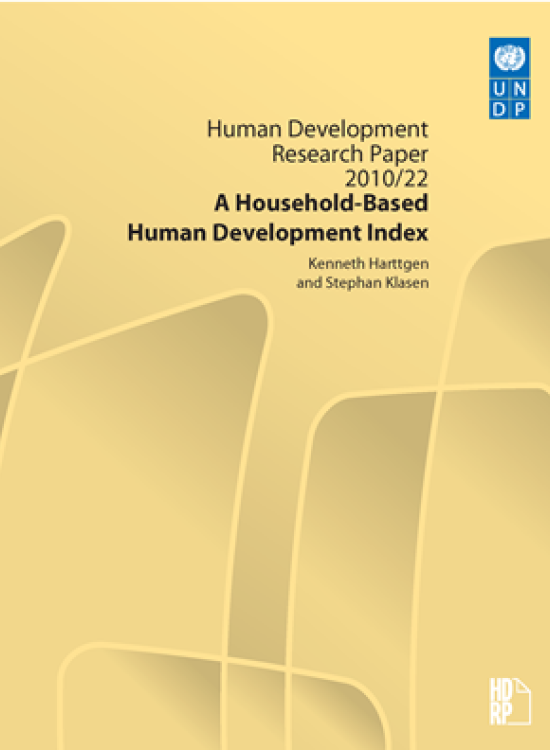A Household-Based Human Development Index

Download Report by Language
Document
hdrp201022rev.pdf
(1.36 MB)
Citation
Harttgen, Kenneth; Klasen, Stephan. 2010. A Household-Based Human Development Index. New York.
A Household-Based Human Development Index
Posted on: January 01, 2010
One of the most serious weaknesses of the Human Development Index (HDI) is that it considers only average achievements and does not take into account the distribution of human development within a country or by population subgroups. All previous attempts to capture inequality in the HDI have also used aggregate information and there exists no HDI at the household level. This paper provides a method and illustration for calculating the HDI at the household level. This immediately allows the analysis of the HDI by any kind of population subgroups and by household socioeconomic characteristics. Furthermore, it allows to apply any kind of inequality measure to the HDI across population subgroups and over time. We illustrate our approach for 15 developing countries. Inequality in the HDI is largest in poorer countries, particularly in Sub-Saharan Africa. We also find large inequalities within countries between population subgroups, particularly by income, location, and education of the household head. We also find considerable inequality when looking at inequality measures like the Theil or the Gini coefficient; within-group inequality is, however, invariably larger than between-group inequality and inequality in the HDI within countries is of similar order of magnitude of inequality in the HDI between countries.